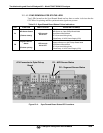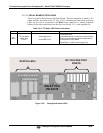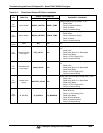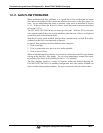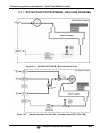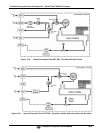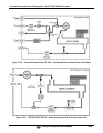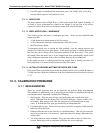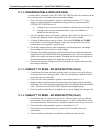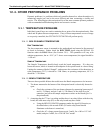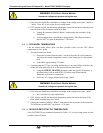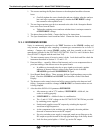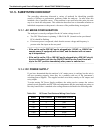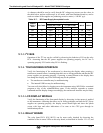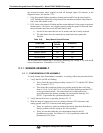
Troubleshooting and ServiceTeledyne API – Model T300/T300M CO Analyzer
Teledyne Analytical Instruments 266
5. If an IZS option is installed in the instrument, press CALZ and CALS. If the flow
increases then suspect a bad sample/cal valve.
12.2.2.3. HIGH FLOW
The most common cause of high flow is a leak in the sample flow control assembly. If
no leaks or loose connections are found in the fittings or the gas line at the orifice,
replace the critical flow orifice(s) inside the sample flow control assembly.
12.2.2.4. DISPLAYED FLOW = “WARNINGS”
This warning means that there is inadequate gas flow. There are four conditions that
might cause this:
1. A leak upstream or downstream of the flow sensor
2. A flow obstruction upstream or downstream of the flow sensor
3. Bad Flow Sensor Board
To determine which case is causing the flow problem, view the sample pressure and
sample flow functions on the front panel. If the sample pressure is reading abnormally
low, then the cause is likely a flow obstruction upstream of the flow sensor. First, check
the sample filter and make sure it is not plugged and then systematically check all the
other components upstream of the orifice to ensure that they are not obstructed.
If the sample pressure is reading normal but the sample flow is reading low then it is
likely that there is an obstruction downstream of the flow sensor.
12.2.2.5. ACTUAL FLOW DOES NOT MATCH DISPLAYED FLOW
If the actual flow measured does not match the displayed flow, but is within the limits of
720-880 cm
3
/min, adjust the calibration of the flow measurement as described in Section
11.3.3.
12.3. CALIBRATION PROBLEMS
12.3.1. MISCALIBRATED
There are several symptoms that can be caused by the analyzer being miscalibrated.
This condition is indicated by out of range Slopes and Offsets as displayed through the
test functions and is frequently caused by the following:
1. Bad span gas. This can cause a large error in the slope and a small error in the
offset. Delivered from the factory, the GFC7001T Analyzer’s slope is within ±15%
of nominal. Bad span gas will cause the analyzer to be calibrated to the wrong
value. If in doubt have the span gas checked by an independent lab.
2. Contaminated zero gas. Excess H
2
O can cause a positive or negative offset and will
indirectly affect the slope.
3. Dilution calibrator not set up correctly or is malfunctioning. This will also cause the
slope, but not the zero, to be incorrect. Again the analyzer is being calibrated to the
wrong value.
4. Too many analyzers on the manifold. This can cause either a slope or offset error
because ambient gas with its pollutants will dilute the zero or span gas.



